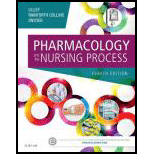
To explain:
The pathology of primary and secondary hyperlipidemia, including causes and risk factors.
Concept introduction:
Cholesterol is important for the healthy and proper functioning of the brain, cell membrane, and storage of vitamins and high level of cholesterol in the blood is referred to as hyperlipidemia. Generally, the person with hyperlipidemia has no problem, it can be identified only through a blood test. It will cause high-risk factors, including heart disease, which can lead to death.
Explanation of Solution
Hyperlipidemia is further divided into subtypes, including primary and secondary hyperlipidemia. The main difference is primary hyperlipidemia is due to genetic cause. Example: Mutation occurs in the protein receptor. But the secondary hyperlipidemia is the root cause of the disease. Example: Diabetes.
Primary hyperlipidemia mainly occurs due to genetic abnormalities and lipoprotein that adversely damages the
Causes of hyperlipidemia:
- The primary hyperlipidemia is mainly due to genetic factors and the secondary hyperlipidemia is caused due to poor diet.
- Hyperlipidemia is also caused due to using drugs like hormonal drugs and steroids.
- Consumption of excessive alcohol.
- Obesity and kidney disease.
Risk factors:
Hyperlipidemia can lead to serious risk factors, including cardiovascular disease and multiple coronary diseases. If the body cannot eliminate excess fat, it then affects organs and arteries present in the body that develop into heart disease.
Hyperlipidemia is prevented by avoiding eating food that contains low saturated fats and cholesterol. The food includes vegetables, fruits, and nuts could help to decrease the lipid abnormalities and risk from hyperlipidemia.
Want to see more full solutions like this?
Chapter 27 Solutions
Pharmacology and the Nursing Process, 8e
 Phlebotomy EssentialsNursingISBN:9781451194524Author:Ruth McCall, Cathee M. Tankersley MT(ASCP)Publisher:JONES+BARTLETT PUBLISHERS, INC.
Phlebotomy EssentialsNursingISBN:9781451194524Author:Ruth McCall, Cathee M. Tankersley MT(ASCP)Publisher:JONES+BARTLETT PUBLISHERS, INC. Gould's Pathophysiology for the Health Profession...NursingISBN:9780323414425Author:Robert J Hubert BSPublisher:Saunders
Gould's Pathophysiology for the Health Profession...NursingISBN:9780323414425Author:Robert J Hubert BSPublisher:Saunders Fundamentals Of NursingNursingISBN:9781496362179Author:Taylor, Carol (carol R.), LYNN, Pamela (pamela Barbara), Bartlett, Jennifer L.Publisher:Wolters Kluwer,
Fundamentals Of NursingNursingISBN:9781496362179Author:Taylor, Carol (carol R.), LYNN, Pamela (pamela Barbara), Bartlett, Jennifer L.Publisher:Wolters Kluwer, Fundamentals of Nursing, 9eNursingISBN:9780323327404Author:Patricia A. Potter RN MSN PhD FAAN, Anne Griffin Perry RN EdD FAAN, Patricia Stockert RN BSN MS PhD, Amy Hall RN BSN MS PhD CNEPublisher:Elsevier Science
Fundamentals of Nursing, 9eNursingISBN:9780323327404Author:Patricia A. Potter RN MSN PhD FAAN, Anne Griffin Perry RN EdD FAAN, Patricia Stockert RN BSN MS PhD, Amy Hall RN BSN MS PhD CNEPublisher:Elsevier Science Study Guide for Gould's Pathophysiology for the H...NursingISBN:9780323414142Author:Hubert BS, Robert J; VanMeter PhD, Karin C.Publisher:Saunders
Study Guide for Gould's Pathophysiology for the H...NursingISBN:9780323414142Author:Hubert BS, Robert J; VanMeter PhD, Karin C.Publisher:Saunders Issues and Ethics in the Helping Professions (Min...NursingISBN:9781337406291Author:Gerald Corey, Marianne Schneider Corey, Cindy CoreyPublisher:Cengage Learning
Issues and Ethics in the Helping Professions (Min...NursingISBN:9781337406291Author:Gerald Corey, Marianne Schneider Corey, Cindy CoreyPublisher:Cengage Learning





